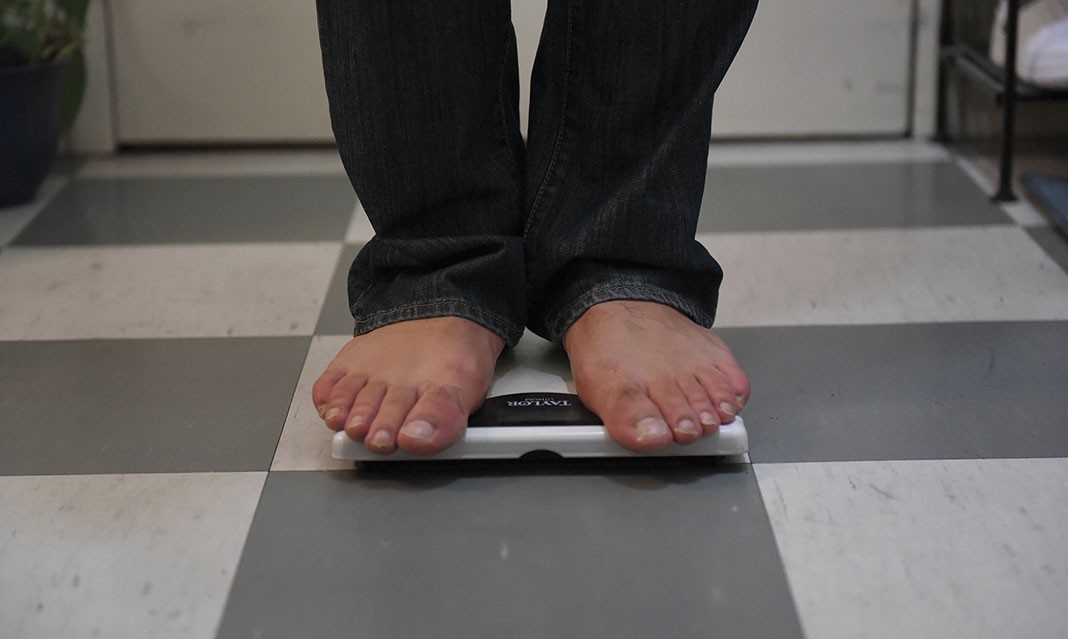There are three things I don’t trust in this world: the 110 bus schedule, oatmeal cookies that look like chocolate chip cookies, and Nicki Minaj’s butt.
As I finished my final set of squats last week at the gym, I couldn’t help but imagine her derrière and why it has suddenly become a fixation with so many women, leading them to question the size and shape of their own.
Don’t we know that body “ideals”, propagated through media icons like Minaj and the Kardashians, are virtually impossible to achieve through biological accident? Why is it that the pressures to meet these unrealistic body and beauty standards are nonetheless pervasive?
The problem is that we rely so heavily on mainstream media’s depiction of what it means to have a “desirable” body. Even if these goals are realistically unachievable, we pick up on these dominant social norms of attractiveness, whether we realize it or not.
Now I’m not suggesting that every time you hit the gym, your goal is to pull a Kim Kardashian and break the Internet. Unless it is—in which case, don’t quit your day job. But it’s reasonable to say that while we aim to maintain an active and healthy lifestyle, we low-key also want the booty, abs, and biceps to show for it.
Clearly, there’s meaning ascribed to having these bodily characteristics, whether they’re artificial or not. It’s significant because it comes down to one’s specific desires. Even though these beauty norms are socially constructed, the consequences of not conforming are real experiences we face, whether it is stigmatization or feelings of inferiority and insecurity.
Third-year criminology student Kanu Supeyia agrees that there is pressure for an underlying aesthetic goal she should meet, and blames it on the images she sees on social media.
“Going through Instagram and Facebook and watching these women with perfect bodies get so many likes and shares diminishes my self-esteem so much, even after I thought I had a great workout,” she says. “So although I want to stay healthy, in the back of my mind what keeps me coming back consistently is this idea of a slimmer body or a bigger butt.”
This, of course, shouldn’t come as a surprise, since we’re persistently exposed to conventionally attractive people on television, in music videos, magazines, advertising, and mass media in general that perpetuate dominant social norms about attractiveness. Exposure and interaction with this messaging lead us to make comparisons and scrutinize our own bodies.
Associate professor of sociology Shyon Baumann adds, “Studies show that exposure to mass media content is related to negative feelings about body image, self-esteem, and the holding of stereotypical beliefs about attractiveness.”
If you know what a “belfie” is, the words to “Bootylicious”, or watch “how to twerk” tutorials on YouTube then you know better than anyone the power mass media has in influencing how we think about our appearance and that of others.
But women are not the only ones who suffer. This “one-size-fits-all” scheme of attractiveness cast in the media also extends to men.
“Since the 1970s, there has been a change in attractiveness ideals regarding masculinity ideals. Media portrays muscular men as ideal, and the research suggests that these ideals might have originated in the sports world,” says Baumann.
Enter Magic Mike and his entourage of chiseled biceps and contoured and aesthetically pleasing dancers, and we forget what most men realistically look like.
Third-year biology major Harry Sandhu is well aware of this pressure. “To be honest, I work on my upper body more than my lower body, because it’s the first thing that people notice. Media puts so much emphasis on guys having hard abs, biceps and having a big chest,” he says.
This “perfection” blueprint men are expected to emulate further exceeded comfortable levels when women began giving more attention to men who can meet these standards on platforms that can reach millions of individuals in a matter or seconds.
Instead, watch the number of icons these days saying hasta la vista to conventional beauty standards, widening the definition of beauty. This push for more realistic body positive images and discourses in the media has been gaining momentum.
The standards of beauty may be changing, and many feel empowered with trending statements like “strong is the new sexy”, “strong is the new skinny”, and “real women have curves”.
But wait, I don’t have curves—and all this time I thought I was a woman.
Obviously, we still need to be cautious not to shift the problem from one group to another and insinuate that one body type is better or worse. Because sorry to sound cliché, but men and women come in all shapes and sizes. Efforts to push one body group forward as the be-all and end-all physique is counterintuitive.
Tariq Ado-Ibrahim, a personal trainer at the UTM fitness centre, advises that we need to keep social media in check. “Realize that the media is out there to sell, sometimes through subliminal messages. Just stay true to yourself by leaving the media in the virtual world and live in reality. It shouldn’t be misconstrued, and we shouldn’t try to blend both of them together,” he says.
Amen to that. And while we wait for mass media to get its act together, we need to aspire to be the best version of ourselves, be our own role models, and stop chasing those ideals, because that’s all they are—ideals.



